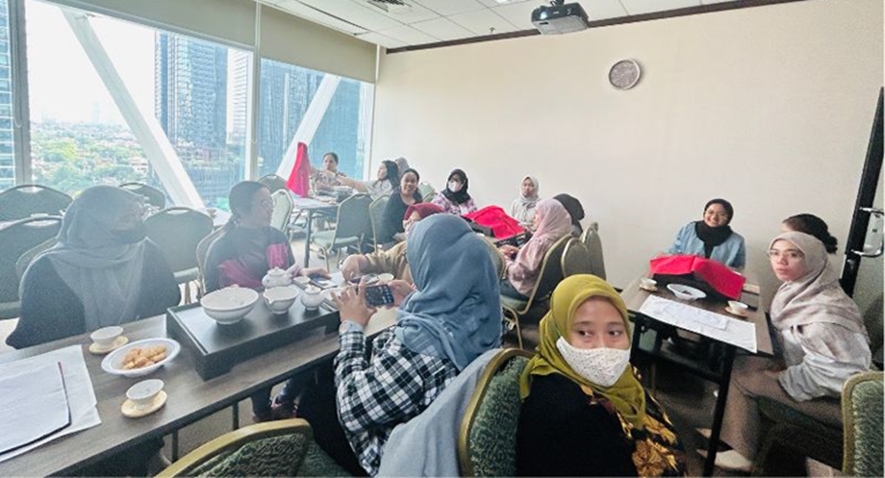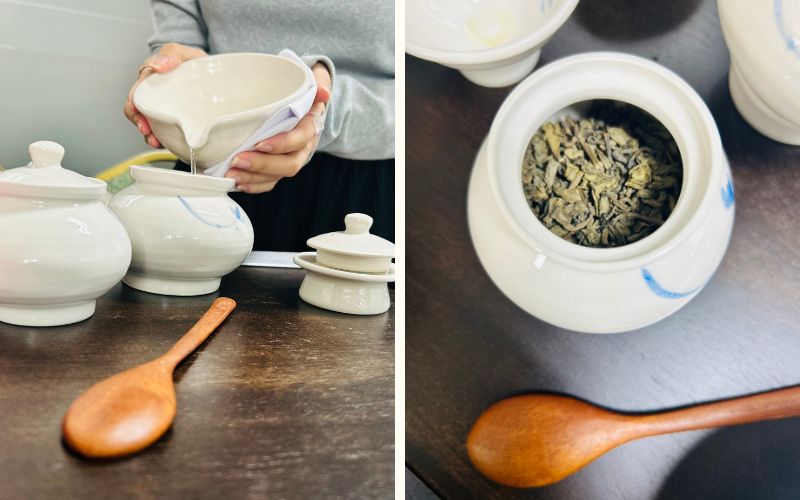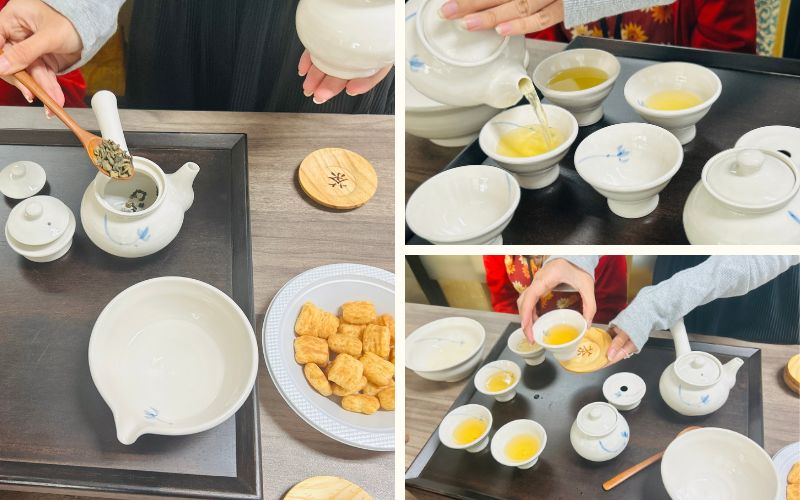- 한국어
- English
- 日本語
- 中文
- العربية
- Español
- Français
- Deutsch
- Pусский
- Tiếng Việt
- Indonesian
By Honorary Reporter Hanum Nur Aprilia from Indonesia
Photos = Hanum Nur Aprilia
The Korea Cultural Center (KCC) in Indonesia and Jeonbuk International Cooperation Agency (JBICA) on Sept. 27 held a Korean tea event at the KCC in Jakarta, offering an experience with a tradition that symbolizes harmony, respect and etiquette.
A JBICA representative gave a brief introduction to Korean tea culture, saying drinking tea in Korea holds deep spiritual and social significance, especially with the older generation. The three main forms of Korean tea are loose tea leaves, powdered tea and cheongtaejeon, or coin-shaped fermented green tea. The fermentation process produces a unique aroma and taste dating back to the days of royal rituals.

Participants at the traditional tea event sit in assigned tables.
Korean green tea is classified by harvest timing into the grades sejak, jungjak and daejak, each with distinct flavors. The high quality sejak, picked from late April to early May, boasts a fresh, sweet and delicate profile. Jungjak, harvested in May, offers a more complex yet smooth flavor. And daejak, collected from late May to June, has a bolder and slightly bitter taste ideal for daily consumption and affordability.
Korean tea culture also emphasizes seasonal brewing methods. In summer, hot water is added first with tea leaves. In spring and fall, the method is to pour half of the water, add the leaves and later the rest. In winter, the order is reversed, with tea added before hot water, to ensure optimal brewing temperatures that align with seasonal conditions.
After the explanation, participants tried their hand at the tea ceremony. They arranged the tools according to tradition and took turns playing host and guest. One of the first steps was warming cups with hot water before brewing the tea.
The host used the brewing method for autumn and served the tea through three rounds to ensure that all cups were equally filled. This slow and careful process is about balance and fairness, two key values in Korean tea culture.

Tea brewing using the fall brewing technique
Participants also learned the proper etiquette for welcoming guests and key Korean phrases used in tea ceremonies. Things concluded on a relaxed note, with attendees sipping their tea and enjoying traditional treats over light conversation and their newfound knowledge of Korean tea traditions.

Shown is the process of tea brewing as well as traditional snacks to eat them with.
msjeon22@korea.kr
*This article is written by a Korea.net Honorary Reporter. Our group of Honorary Reporters are from all around the world, and they share with Korea.net their love and passion for all things Korean.